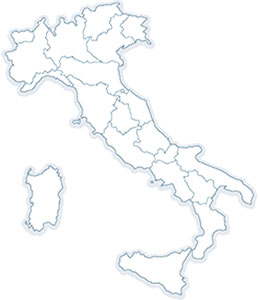Taranto, an ancient Greek colony founded by the Spartans boasts many architectural, archaeological, historical treasures
Itinerary: Taranto
Taranto in Salento, also called the City of the Two Seas
Taranto (pic n°2) is one of the main cities in Apulia region located on the "heel" of boot-shaped Italy, and it is the main city of Salento, an amazing area which is getting more and more popular thanks to its wonderful beaches, crystal clear sea water, beautiful landscapes and temperate weather.
Taranto is known as "the City of the Two Seas" due to its particular location by the Ionian Sea between Mare Piccolo (Small Sea) and Mare Grande (Large Sea) overlooking the Gulf of Taranto. Not far from its coast there is also a colony of dolphins living in the open sea.
The city of Taranto was an ancient Greek colony founded by the Spartans in 706 B.C., so it is rich in artistic, historic and archeological treasures that are worth to be discovered.
The area of the city is spread over three peninsulas and one artificial island. The bridge which links the mainland to this island is one of the main symbols of the city, called "Ponte di San Francesco di Paola" (pic n°3) (St.Francis of Paola Bridge), but also "Ponte Girevole" (Swing Bridge). It was built in 1887 following the project of engineer Giuseppe Messina and restored in 1957. Since it is built over a navigable channel, this metal bridge can be opened in order to let ships and boats pass.
Crossing the bridge, you will get to the district of "Borgo Antico" located on the small island where you can visit Hypogeum De Beaumont Bonelli Bellacicco. This Palace was built in the late 17th century over pre-existing underground structures which have been gouged by the Spartans in order to find materials required to build the city. This underground building spreads over 700 square meters and today it is the most valuable exhibition center of the history of the city. It traces the history of Taranto from ancient geological eras to the Greek period, from the Byzantine and the Medieval Ages to the eighteenth century. Since 2015 Hypogeum De Beaumont Bonelli Bellacicco has also been hosting "Museo Spartano di Taranto" (pic n°6) (Spartan Museum of Taranto), the only Spartan Museum in the world. Here, you can discover the mysteries and wonders of the ancient Spartans.
Do not leave "Borgo Antico" district without visiting the most imposing building of Taranto, visible from all over the city: the Aragon Castle (pic n°1), or Castel Sant'Angelo, whose squared structure is located on the southeast corner of the island. The castle was built by the Byzantine people in 916 as a defensive fortification, and it was enlarged and restored by Ferdinando II of Aragon in 1486 realizing its appearance we can enjoy still today, with seven majestic towers nestled in the ancient walls that run along a trench. was
Another impressive building of the city is Fortezza di Lacios, a fortified castle built at the request of Napoleone Bonaparte at the end of the seventeenth century, in order to defend the city from external attacks. Other than being an important military and architectural milestone of Taranto, the fortress is important from a paleontological point of views as well, because many fossils were discovered on the calcareous blocks that were used to cover the castle's walls.
The Cathedral of San Cataldo (pic n°4), or Duomo di Taranto, is also a must-see. It is the most ancient cathedral in Apulia, and it was built in the tenth century during the Byzantine period. A century later, the church was re-made following a basilica-like structure. Today, the church features a Norman bell tower (which was rebuilt after an earthquake) and a wonderful Baroque-style façade.
Also, do not miss the modern church called "Concattedrale Gran Madre di Dio", built in 1967 by famous architect Giò Ponti. To celebrate the maritime nature of the city, this church would look like a "sail" which is reflected in three pools representing the sea.
If you are an archaeology lover, Taranto is the destination for you. Pay a visit to the Greek and Roman necropolises, which are able to give lots of information about the society, the lifestyle and the religion of those ancient people. The tombs are located in seven different archaeological sites across the city.
One of the most important archeological museums in Europe is MARTA (pic n°5) "Museo Archeologico Nazionale di Taranto" (National Archaeological Museum of Taranto). The museum, built in 1887, is made of 25 halls where visitors can follow the history of the city and admire the most beautiful and interesting artifacts dating back to the Greek age.
Some pictures of Taranto:
Aragon Castle (pic n°1); View of the city (pic n°2); Ponte Girevole (Swing Bridge) (pic n°3); Cathedral of San Cataldo (pic n°4); National Archaeological Museum of Taranto (pic n°5); Spartan Museum of Taranto (pic n°6);
Need to rent a motorcycle to follow this tour? Search here and book online:












